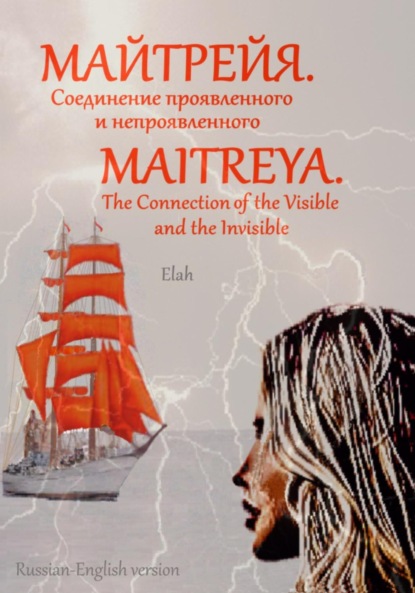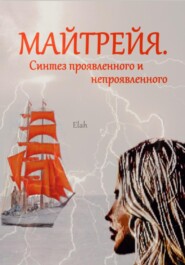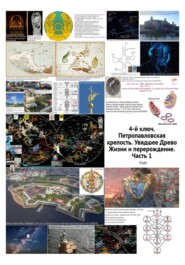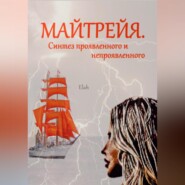По всем вопросам обращайтесь на: info@litportal.ru
(©) 2003-2024.
✖
Майтрейя. Слияние проявленного и непроявленного Maitreya. The Connection of the Visible and the Invisible
Настройки чтения
Размер шрифта
Высота строк
Поля
Каждый сфинкс имеет по две вполне самостоятельных надписи, представляющих собой варианты титулатуры Аменхотепа III. Каждая пара надписей начинается с одного и того же знака anx «жизнь», стоящего перед лицом фараона, обегая лентой в разные стороны весь памятник и образуя причудливый орнамент. Заканчиваются надписи также одинаково: знаком Dt «вечность». “Надписи на ленинградских сфинксах”, Черезов Е. В.
31
The Saint Petersburg Sphinxes are about 3500 years old. They are made from syenite and initially were in front of a magnificent temple, which was built in Egypt near Thebes (Luxor) for the 18th dynasty pharaoh Amenhotep III. Their faces are portraits of Amenhotep III and the shape of their headwear (crowns "pa shemti") indicate that he was the ruler of two kingdoms—the Upper Egypt and Lower Egypt. The sphinxes weigh about 23 tons each.
The acquisition of sphinxes at the University embankment in front of the Academy of Arts in St. Petersburg is credited to Andrei Muravyov, who in 1830 was going on a pilgrimage to holy places. In Alexandria he saw the sphinxes, which were brought for sale. Ancient sculptures made him so impressed that he immediately sent a letter to the Russian Ambassador, in which he proposed to acquire them. From the Embassy the Letter was directed to St. Petersburg. There its receiver, Nicholas I, redirected the message to the Russian Academy of Arts. In the end, such a purchase was deemed expedient, but by the time these bureaucratic complications were resolved, the owner had already sold sphinxes to France. Only because of the French Revolution they at last arrived in Saint Petersburg in 1832. Source Wikipedia
"Sizes Sphynx is enormous: the height of 3 m 73 cm, length 5 m 43 cm, width 1 m 78 cm. … Sphinx with big size, representing other pharaohs, there are a lot, for example: in the Louvre Museum Pharaoh Merneptah and Ramesses II, in the Cairo Museum of Amenemhat III, Thutmose III, Ramesses II. The Sphinx, representing the Pharaoh Thutmose III, stands on the banks of the Thames in London. But only in St. Petersburg is well-preserved sphinxes representing Amenhotep III with a double crown, having a lot of epigraphic material." "The inscriptions on the Leningrad sphinxes", Cherezov, E. V.
32
Each Sphinx has two completely independent labels that represent the options titulature Amenhotep III. Each pair of labels starts with the same sign anx "life," standing before the face of Pharaoh, twining around tape in different directions all the monument, forming a bizarre pattern. The inscription also ends the same way: the sign of Dt is "eternity." "The inscriptions on the Leningrad sphinxes", Cherezov, E. V.
33
«… архитектор Монферран, заканчивавший в том же 1834 году Александровскую колонну на Дворцовой площади, предлагал изваять и установить между сфинксами колоссальную статую Осириса, но проект пристани был уже утверждён ранее (16 декабря 1831 года) высочайшим указом императора и пересматривать его не стали.» ИсточникВикипедия
34
“… the architect Montferrand that finished the Alexander's column on Palace square in the same 1834, offered to carve and install the colossal statue of Osiris between the sphinxes, but the project of the jetty had already been approved previously (16 December 1831) the highest decree of the Emperor, and it was not reviewed.” Source Wikipedia
35
Грифоны – мифологические крылатые существа, с туловищем льва и головой орла или иногда льва. Имеют острые когти и белоснежные (или золотые) крылья. Грифоны – противоречивые существа, одновременно объединяющие Небо и Землю, Добро и Зло. Их роль – и в различных мифах, и в литературе – неоднозначна: они могут выступать и как защитники, покровители; и как злобные, ничем не сдерживаемые звери. ИсточникВикипедия.
36
The griffin, griffon, or gryphon is a legendary creature with the body, tail, and back legs of a lion; the head and wings of an eagle; and an eagle's talons as its front feet. Because the lion was traditionally considered the king of the beasts and the eagle the king of birds, the griffin was thought to be an especially powerful and majestic creature. The griffin was also thought of as king of all creatures. Griffins are known for guarding treasure and priceless possessions. … In antiquity it was a symbol of divine power and a guardian of the divine. Source Wikipedia.
37
Термин «фрактал» введён Бенуа Мандельбротом в 1975 году и получил широкую известность с выходом в 1977 году его книги «Фрактальная геометрия природы». Исследуя экономику, Мандельброт обнаружил, что произвольные внешне колебания цены могут следовать скрытому математическому порядку во времени, который не описывается стандартными кривыми. Фрактал (лат. fractus – дроблёный, сломанный, разбитый) – математическое множество, обладающее свойством самоподобия (объект, в точности или приближённо совпадающий с частью себя самого, то есть целое имеет ту же форму, что и одна или более частей). Многие объекты в природе обладают свойствами фрактала, например: побережья, облака, кроны деревьев, снежинки, кровеносная система, система альвеол человека или животных. Фракталы широко применяются в компьютерной графике для построения изображений природных объектов, таких как деревья, кусты, горные ландшафты, поверхности морей и так далее. Существует множество программ, служащих для генерации фрактальных изображений. Источник Википедия.
38
The term "fractal" was first used by mathematician Benoit Mandelbrot in 1975. Mandelbrot based it on the Latin fractus meaning "broken" or "fractured", and used it to extend the concept of theoretical fractional dimensions to geometric patterns in nature.
One often cited description that Mandelbrot published to describe geometric fractals is "a rough or fragmented geometric shape that can be split into parts, each of which is (at least approximately) a reduced-size copy of the whole"; this is generally helpful but limited. Authors disagree on the exact definition of fractal. . ..
Fractals are also found in human pursuits, such as music, painting, architecture, and stock market prices. Mandelbrot believed that fractals, far from being unnatural, were in many ways more intuitive and natural than the artificially smooth objects of traditional Euclidean geometry:
Clouds are not spheres, mountains are not cones, coastlines are not circles, and bark is not smooth, nor does lightning travel in a straight line.
– Mandelbrot, in his introduction to The Fractal Geometry of Nature
Approximate fractals found in nature display self-similarity over extended, but finite, scale ranges. The connection between fractals and leaves, for instance, is currently being used to determine how much carbon is contained in trees. Phenomena known to have fractal features include: River networks, Fault lines, Mountain ranges, Craters, Lightning bolts Coastlines, Mountain goat horns Trees, Algae Geometrical optics, Animal coloration patterns, Romanesco broccoli, Pineapple, Heart rates, Heart sounds, Earthquakes, Snowflakes, Psychological subjective perception, Crystals, Blood vessels and pulmonary vessels, Ocean waves, DNA, Soil pores, Rings of Saturn, Proteins Surfaces in turbulent flows.
Fractal patterns have been modeled extensively, albeit within a range of scales rather than infinitely, owing to the practical limits of physical time and space. Models may simulate theoretical fractals or natural phenomena with fractal features. The outputs of the modelling process may be highly artistic renderings, outputs for investigation, or benchmarks for fractal analysis.
Images of fractals can be created by fractal generating programs. Because of the butterfly effect a small change in a single variable can have a unpredictable outcome. Source Wikipedia.
39
Диалог из романа «Мастер и Маргарита» М. А. Булгакова
40
The dialogue from the novel "Master and Margarita" by Bulgakov M. A.
41
Станислав Лем, «Сумма технологии» (польск., 1964). «Су?мма техноло?гии» (лат. Summa Technologiae) – философско-футурологический трактат польского писателя Станислава Лема (1963; первая публикация – 1964; второе издание – 1967; впоследствии неоднократно перерабатывался). Назван с аллюзией на «Сумму теологии» (лат. Summa Theologi?) Фомы Аквинского и «Сумму теологии» Альберта Великого. Тематически перекликается с научно-художественным исследованием английского писателя Артура Кларка «Черты будущего» и научно-популярной монографией советского астрофизика Иосифа Шкловского «Вселенная, жизнь, разум» (первое издание обеих работ – 1962).
Основная цель книги – попытка прогностического анализа научно-технических, морально-этических и философских проблем, связанных с функционированием цивилизации в условиях свободы от технологических и материальных ограничений (по образному выражению автора, «исследование шипов ещё несуществующих роз». … Несмотря на значительный срок, прошедший со времени написания работы, а также ряд неточностей, допущенных Лемом в рассуждениях, относящихся к математике, биологии, социологии и некоторым другим областям знания, «Сумма технологии» в целом не только не устарела, но, напротив, приобрела особенную актуальность в интеллектуальном контексте конца XX – начала XXI века. Многие из затронутых Лемом вопросов, в 1960-е годы составлявших исключительную прерогативу научной фантастики – виртуальная реальность, нанотехнологии, искусственный интеллект, технологическая сингулярность, – через 30—40 лет после первой публикации «Суммы» перешли в разряд активно разрабатываемых научных проблем.
Станислав Лем (12 сентября 1921, Львов, Польша – 27 марта 2006, Краков, Польша) – польский философ, футуролог и писатель (фантаст, эссеист, сатирик, критик). Его книги переведены на 41 язык, продано более 30 млн экземпляров. Автор фундаментального философского труда «Сумма технологии», в котором предвосхитил создание виртуальной реальности, искусственного интеллекта, а также развил идеи автоэволюции человека, сотворения искусственных миров и многие другие. ИсточникВикипедия.
42
Summa Technologiae (the title is in Latin, meaning "Sum of Technology" in English) is a 1964 (1967 – second edition) book by Polish author Stanislaw Lem. Summa is one of the first collections of philosophical essays by Lem. The book exhibits depth of insight and irony usual for Lem's creations. The name is an allusion to Summa Theologiae by Thomas Aquinas and to Summa Theologiae by Albertus Magnus.
The Summa is notable for being a unique analysis of prospective social, cybernetic, and biological advances; in this work, Lem discusses philosophical implications of technologies that were completely in the realm of science fiction at the time, but are gaining importance today—for instance, virtual reality and nanotechnology.
Stanislaw Herman Lem (12 September 1921 – 27 March 2006) was a Polish writer of science fiction, philosophy, and satire, and a trained physician. Lem's books have been translated into forty-one languages and have sold over forty-five million copies. From the 1950s to 2000s, he published many books, both science fiction and philosophical/futurological. He is best known as the author of the 1961 novel Solaris, which has been made into a feature film three times. In 1976, Theodore Sturgeon wrote that Lem was the most widely read science fiction writer in the world. Source Wikipedia.
43
ЭдгарКейси (англ. Edgar Cayce; 18 марта 1877, Хопкинсвилл, Кентукки, США – 3 января 1945, Вирджиния-Бич, Виргиния, США) – американскиймистик, медиумисамопровозглашённый «целитель». Кейси был автором нескольких тысяч стенографически записанных ответов (названных «чтениями») на самые разнообразные вопросы, начиная от диагнозов и рецептов для больных и заканчивая информацией о причинах гибели цивилизаций. Поскольку подавляющее их число было сделано им в особом состоянии транса, напоминающем сон, он получил прозвище «Спящий пророк». ИсточникВикипедия.
44
Edgar Cayce (March 18, 1877 – January 3, 1945) was an American Christian mystic who answered questions on subjects as varied as healing, reincarnation, wars, Atlantis, and future events while in a trance. A biographer gave him the nickname, "The Sleeping Prophet". Source Wikipedia.
45
«Алые паруса» – праздник выпускников петербургских школ, отмечаемый в Санкт-Петербурге, как правило, в субботу, ближайшую к самой длинной белой ночи (ориентировочно 18—25 июня). Проводится в два этапа: большой концерт с элементами театрализованного представления на Дворцовой площади и грандиозное светопиротехническое музыкальное мультимедийное шоу в акватории Невы. Ночное шоу представляет собой большой мультимедийный спектакль на открытой воде с применением всех самых современных технологий мультимедийного ряда. Рабочее пространство акватории составляет 1,8 км на 800 метров. Основными компонентами являются: пиротехническое и световое шоу. Дополнительными компонентами: водный перформанс, огневые и фонтанные стены. Всё представление полностью синхронизировано с музыкой по SMPTE-таймкоду. Праздник является одним из крупнейших в мире водных спектаклей, проходящих на открытой воде. Главным событием спектакля является проход вдоль набережных корабля с алыми парусами. Впервые корабль мечты сошел в Неву со страниц книги «Алые паруса» Александра Грина 27 июня 1968 г. Ежегодно «Алые паруса» собирают от полутора до трех миллионов зрителей в центре Петербурга и многомиллионную телевизионную аудиторию федерального Пятого канала. В подготовке и проведении трансляции задействовано 300 специалистов, три передвижные телевизионные станции (ПТС), 50 камер, установленных на набережных, мостах, на корабле, на воде, непосредственно за пиротехническими фронтами, на высотных зданиях города, в том числе на крыше Эрмитажа, на балюстраде Исаакиевского собора и смотровой площадке петербургской телебашни. ИсточникВикипедия.
46
The Scarlet Sails (Russian: Алые паруса) is a celebration in St. Petersburg, Russia, the most massive and famous public event during the White Nights Festival. The tradition is highly popular for its spectacular fireworks, numerous music concerts, and a massive water show. The Scarlet Sails show celebrating the end of the 2007 school year was attended by more than one million people. In 2010, public attendance grew to 3 million, and entertainers were such stars as the Cirque du Soleil, Mariinsky Ballet and Antonio Banderas, among others.
This tradition began after the end of World War II, when several Leningrad schools united to celebrate the end of the school year in connection with the symbolism of the popular 1922 children's book Scarlet Sails by Alexander Grin. During the first celebration, a boat with scarlet sails sailed along the English Embankment and the Admiralty Embankment towards the Winter Palace. Although it was designed to update the rusty revolutionary propaganda, the "Scarlet Sails" tradition eventually evolved into a massive demonstration of freedom from "schools and rules" and has become the most popular public event annually celebrating the end of school year.
Crowds of about one million people are treated to a wide variety of free entertainment provided by the city of St. Petersburg. Entertainment also includes appearances by popular rock stars, as well as the St. Petersburg Symphony Orchestra, ballet, and other classical acts, performing on several stages simultaneously during the event. The show also includes a series of large-scale events on the waters of the Neva river, such as rowing and motorboat races, and a massive battle with pirates culminating in the appearance of a tall ship sporting spectacular scarlet sails. The show has become the main part of the White Nights celebration.
The popularity of both the book and the tradition was boosted after the 1961 release of the film Scarlet Sails. Source Wikipedia.
47








